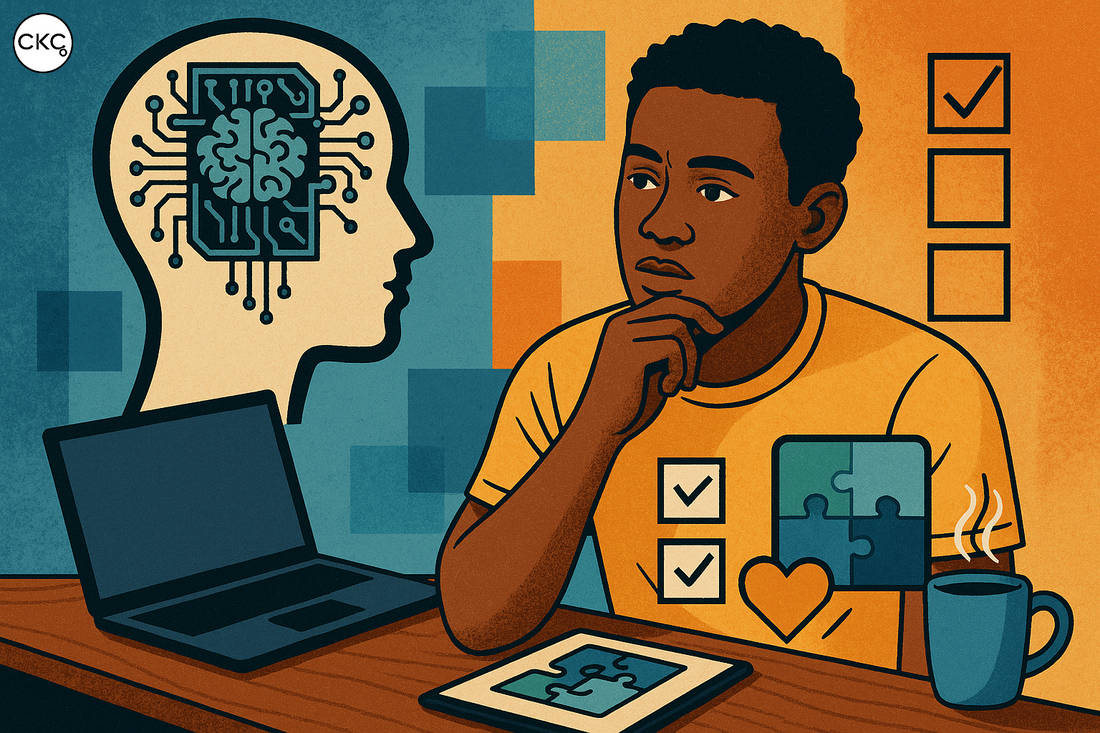
The Real Cost of Digital Displacement (And How to Prevent It)
Share
Your best project manager just told you she's "not sure she adds value anymore" since the team started using AI for planning. Your most innovative designer has stopped proposing creative solutions because "the AI already suggested something." Your strongest analyst is second-guessing insights that took years to develop.
This is digital displacement, and it's costing organisations far more than they realise.
The Hidden Economics of Displacement
Digital displacement isn't just about job losses. It's the gradual erosion of human confidence, creativity, and institutional knowledge that happens when AI systems are poorly integrated into human workflows.
The financial impact includes:
- Reduced innovation as people defer to AI suggestions rather than developing original ideas
- Loss of institutional knowledge as experienced professionals question their expertise
- Decreased resilience when teams become overly dependent on AI tools for decision-making
- Higher turnover as valuable employees feel undervalued or redundant
The Three Stages of Displacement
Stage 1: Subtle Erosion
People start questioning their own judgment when AI provides different recommendations. They begin to defer to AI suggestions even in areas where human insight is crucial.
Stage 2: Skill Atrophy
Teams stop developing certain capabilities because AI handles those tasks. When AI fails or provides inadequate solutions, people have lost the skills to step in effectively.
Stage 3: Identity Crisis
Professionals struggle to articulate their unique value. They feel like expensive quality-checkers for AI output rather than skilled contributors to organisational success.
Early Warning Signs
Individual Level:
- Experienced professionals seeking excessive validation for decisions they used to make confidently
- Decreased participation in brainstorming or strategic discussions
- People saying "the AI probably knows better" about areas of their expertise
Team Level:
- Fewer original ideas are proposed
- Increased reliance on AI-generated solutions without critical evaluation
- Reluctance to challenge or improve AI recommendations
Organisational Level:
- Decreased ability to handle situations where AI tools are unavailable
- Loss of competitive advantages that came from human expertise
- Reduced agility when facing novel challenges
Prevention Strategies That Actually Work
Maintain Human Leadership in AI Collaboration
Structure AI interactions so humans set objectives, provide context, and evaluate outcomes. AI should enhance human decision-making, not replace it.
Create AI-Free Zones
Designate specific projects, meetings, or problem-solving sessions where teams work without AI assistance. This maintains and develops human capabilities.
Celebrate Human Insight
Actively recognise moments when human judgment improves AI recommendations or identifies AI limitations. This reinforces the value of human expertise.
Build Confidence Through Competence
Provide training that helps people understand AI capabilities and limitations. When people understand what AI can and cannot do, they're more likely to maintain confidence in their own abilities.
The Organisational Immune System
Think of displacement prevention as building organisational immunity. Just as biological immune systems distinguish between helpful and harmful elements, organisations need systems that distinguish between supportive AI integration and displacement-causing dependency.
This requires:
- Regular assessment of how AI tools are affecting human confidence and capabilities
- Clear role definitions that specify where human judgment is essential
- Feedback mechanisms that help teams adjust AI integration based on human impact
- Leadership modelling that demonstrates effective human-AI collaboration
Recovery and Rebuilding
If your organisation is already experiencing digital displacement, recovery is possible but requires intentional effort:
- Rebuild Confidence: Create opportunities for people to solve problems and make decisions without AI assistance. Success in these areas rebuilds professional confidence.
- Reconnect with Purpose: Help teams remember why their human judgment, creativity, and experience matter. Connect their work to meaningful outcomes that require human insight.
- Redesign Integration: Review how AI tools are being used and adjust to ensure they support rather than replace human capabilities.
The Long-Term View
Organisations that prevent digital displacement maintain current capabilities while positioning themselves for future success. When new challenges arise or AI tools fail, these entities have maintained the human capabilities needed to adapt and innovate.
The goal isn't to limit AI use. Instead, it's to ensure AI enhances rather than erodes the human foundation that drives organisational success.
Concerned about digital displacement in your organisation? Discover our assessment tools designed to identify early warning signs and build prevention strategies that protect human expertise while embracing AI benefits.

